Surgical castration (gonadectomy) of young male pigs is an animal husbandry procedure that has been practiced for centuries in pig farming world-wide. It is most often performed before 14 days of age, and is almost always done without anesthetic or analgesics.
While alternative castration methods, such as Burdizzo castration and the rubber-ring method, are utilized for other farm animals like sheep and bull calves, surgical castration is the only appropriate method for piglets. This is due to the small size of the testicles of a piglet, making it difficult to perform either of the aforementioned methods.
The anatomy of the genital tract of male piglets and localisation of incisions during surgical castration can be seen in the following figure:
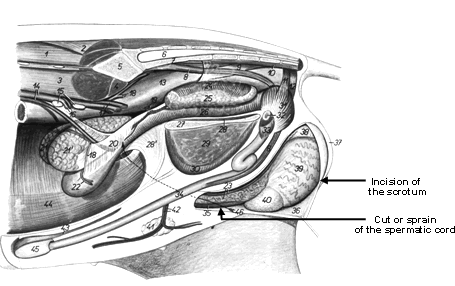
The following is a step-by-step procedure of surgical castration using a v-trough:
- The piglet is caught and restrained: they may be held between the handler’s legs with the head down, held on a flat bench, restrained in a v-trough or in a commercial device.
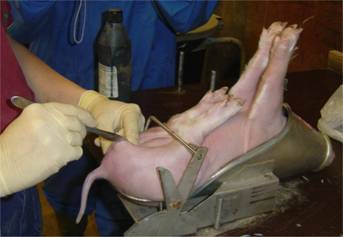
- The scrotum is then incised with a sharp scalpel.
- The incision(s) in the scrotum is approximately 2 cm in length, depending on the size of testes.
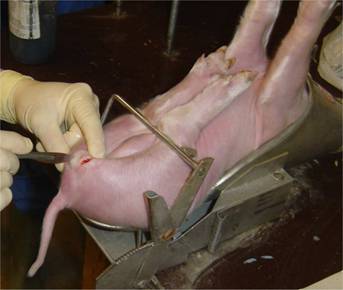
- Additional tissue separation is realised to free each testicle from the surrounding tissue, especially the gubernaculum.
- The testes are extracted and removed either by cutting or pulling the spermatic cord (the funiculus spermaticus) so that it breaks.
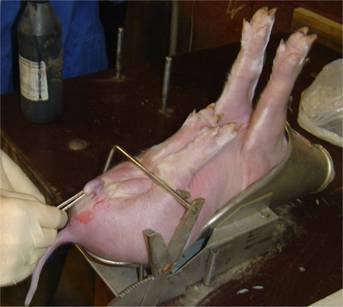
- An antiseptic is often applied to the open wound.
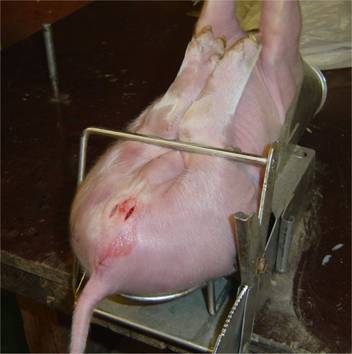
- The piglet is then returned back to its pen with its litter mates.
